The Best Car Wax for Your Ride

This story was updated on July 18, 2022 to include updated products and information.
What’s the best car wax? That depends on you and your vehicle. It depends on the attributes that you value in a car wax, and on the age of your vehicle and the condition of its paint job. There are things car wax can do, and there are things car wax can’t do to improve your machine’s gleam. Read on for, ahem, reflections on automotive shine—our thoughts on the best car wax for your ride.
Ready to wax your car? Here are some of the top-rated car waxes on the market:
Amazon
Meguiar’s Gold Class Carnauba Plus
Affordable and easy to apply
Also available in paste form
Efficient, workmanlike results but nothing special
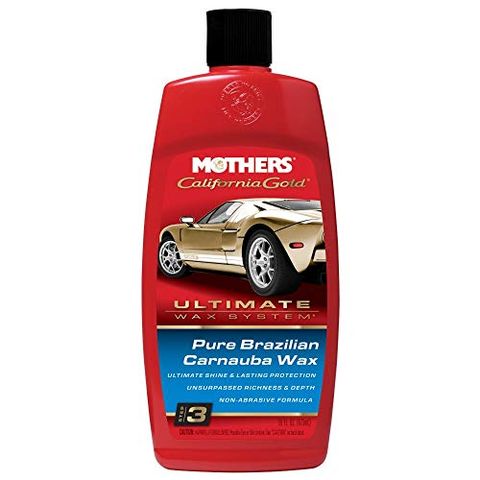
Amazon
Mothers California Gold Pure Brazilian Carnauba Wax
Pure Carnauba wax
Very little buffing required
Best results when used as part of a complete detail job
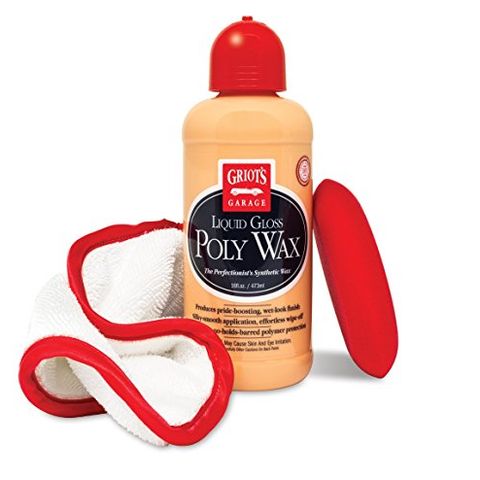
Amazon
Griot’s Garage Liquid Gloss Poly Wax
Includes applicator and removal wipe rag
Made of synthetic polymer technology
Not as long-lasting as some other brands
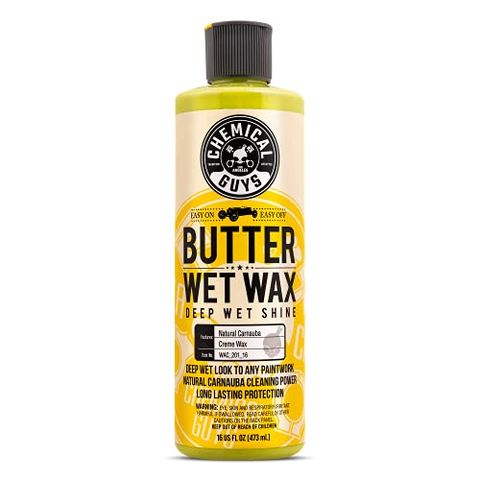
Chemical Guys Butter Wet Wax
A blend of natural Carnauba, polymers, and resins
Helps fight UVA and UVB rays
Has a strong banana scent that is decidedly not for everyone
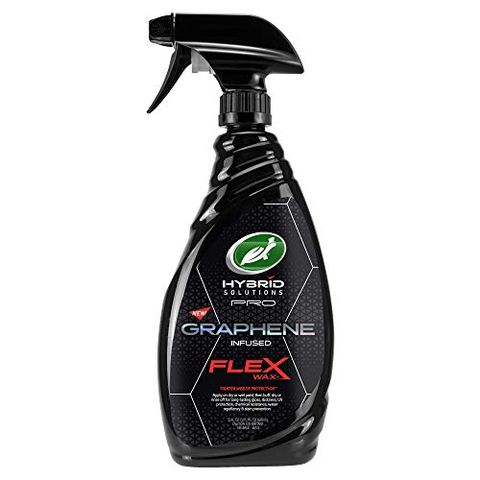
Turtle Wax Hybrid Solutions Pro Graphene Infused Flex Wax
Super versatile; can be used as a finish detail or just a touch-up
Resistance against chemicals, elements, and UV rays
Might not be ideal for dark-colored cars
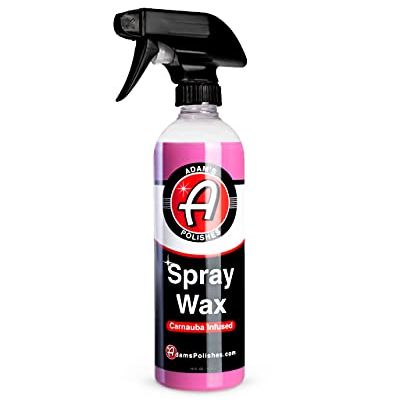
Adam’s Spray Wax
Safe on all exterior car parts
Great for post-wash shine and quick clean-ups
Some users report streaking on glass
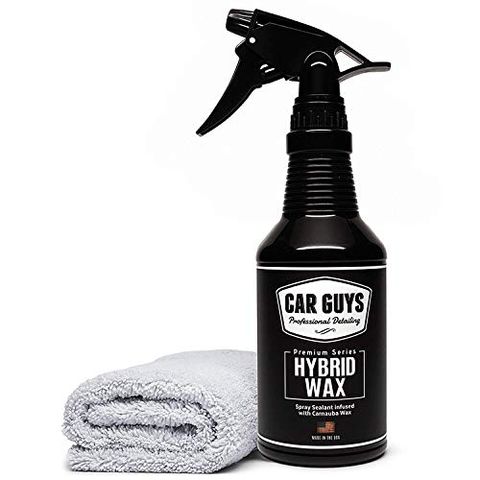
Car Guys Hybrid Wax
Synthetic polymer sealant, not a true “wax”
Never leaves white residue
Works better as a post-wax sealant than a traditional “car wax”
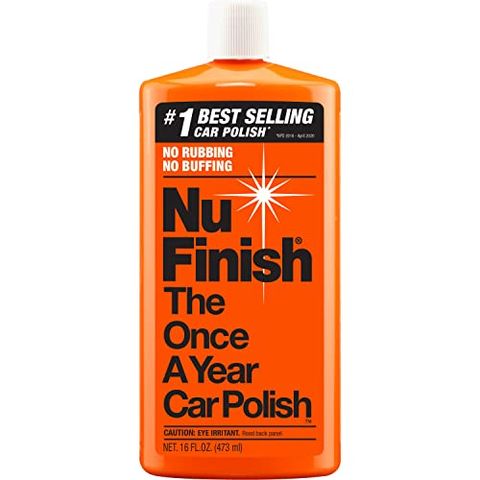
Nu-Finish Liquid Car Polish
Long-lasting versatile shine
Easy to apply with a damp cloth
It’s a “car polish,” not a wax
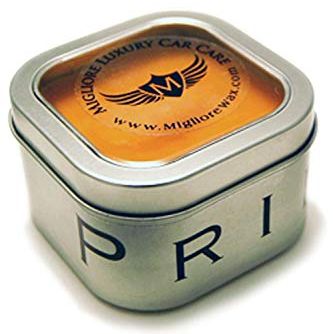
Migliore Primo: Premium Concours Show Car Carnauba Wax
Extremely high Carnauba content
Hand poured in Connecticut from organic ingredients
If you want the best, it’s gonna cost you
Why You Should Wax Your Car
Wax is a protective coating applied on to the top layer of paint, which on virtually all vehicles today is a clear coat. (Clear coat is exactly what the name implies: a coat of clear, hard paint.) A modern vehicle’s finish is composed of three parts: base primer, a color coat, and clear coat. The quality of a vehicle’s shine depends on the smoothness of the clear coat; the smoother the top layer of paint, the more it’s like a mirror. The thin layer of car wax you apply helps fill tiny crevices in the paint that are caused by exposure to the elements and the spinning brushes at car washes.
The best car waxes can also protect the clear coat from hazing, smears, stains, tiny scratches, tree sap, and bird droppings. But to be effective and long-lasting, car wax must be applied only on a perfectly clean vehicle.
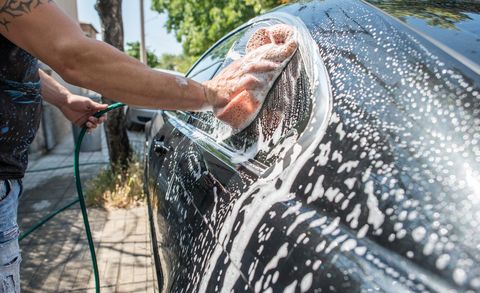
Getty Images
Your Wax Choice Makes a Difference
There are three main kinds of car wax: spray-ons, liquids, and pastes. (We’ll save popular ceramic coatings for another story; our friends at Road & Track explored it here.) The critical attributes of car wax to consider are gloss improvement, durability, ease of application, ease of removal, how well it cleans the paint surface, protection from UV rays, compatibility with plastics, and price.
Spray-on car wax is the easiest to apply and remove. However, spray-on car waxes do not clean deeply, are less weather-resistant, and generally have the poorest durability. That makes them best for new-car finishes, for quickie wax jobs, or detailing on vehicles that are washed and waxed frequently.
Liquid car waxes are better for older, higher-mileage cars that require more aggressive cleaning and sealing. (Some liquid car waxes also clean the finish.) These are usually good for gloss and durability. A number of liquids use carnauba wax, well-known for its high gloss and durability.

Getty Images
The last group is the paste waxes. We’ve found that they take more elbow grease to apply. Despite that, they don’t outperform the liquid car waxes in all attributes. As a group, they do have a reputation for slightly better durability; the shine lasts a little longer. A good rule of thumb is that protection provided by most waxes starts to wane after about five weeks. And most should be reapplied after two to three months.
For most of us, a great wash and wax will be more than enough. But if you seek longer-life paint protection for your ride, you’ll need to go beyond normal car waxes and investigate ceramic coatings. These products chemically bond to your paint for unrivaled wax-like protection. With the proper application and care, your car can stay glossy and protected for 12-24 months. While spray-on ceramic coatings are convenient, you want to use the hand-applied stuff for the best results. However, there is a lot of prep involved with ceramic coatings, so if you don’t feel comfortable applying it yourself, contact a detailing pro.
(Note: While the ease of application and the resulting shine is undeniable, we haven’t yet had the opportunity to test and review ceramic coatings on our own. You can read up on ceramics from our colleagues at Road & Track.)
Which Car Wax Should You Use?
Our suggestion for the best car wax? Find a mid-priced, brand-name liquid wax. Our research and experience shows that premium-priced car waxes do not necessarily hold up any better than lower-priced alternatives. And in some cases, the medium-price products outperform the more expensive brands, though the differences are not huge.
If you want the ultimate show-car finish—especially if your vehicle is several years old and has been through many car washes—you should consider investing in a dual-action orbital buffer and applying polishing compound before waxing. Polishing out the swirl marks and tiny scratches before you wax—no matter what kind of car wax you choose—will deliver a more glossy show-car shine than any wax alone can generate. And using a buffer is simple and safe enough that even amateur detailers can get great results with one.
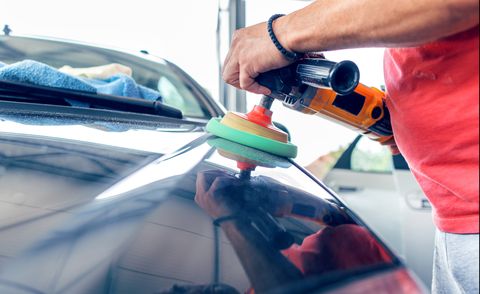
Getty Images
Pre-Wax Car Prep Checklist
Preparation, patience, a sharp eye, and thoroughness are the most important factors in achieving a bright and lasting shine. Here are some prep tips for getting the best results from your chosen car wax:
Do not wash the vehicle or apply car wax in direct sunlight if you can avoid it. Wash your car carefully from top to bottom with a soft cloth, soap, and lots of water. Decontaminate the paint with a cleaner that removes road tar or stuck-on gunk. Use one of the brand-name clay-bar products to gently remove stains and smaller particles, leaving the paint surface smooth to the touch. If you’re really particular, consider using an isopropyl alcohol (IPA) cleaner to remove any surface fillers or polishing oil. (It’s a mix of 50 percent alcohol and 50 percent distilled water.) Your choice of wax can now be applied on the clean clear coat.
This content is created and maintained by a third party, and imported onto this page to help users provide their email addresses. You may be able to find more information about this and similar content at piano.io



